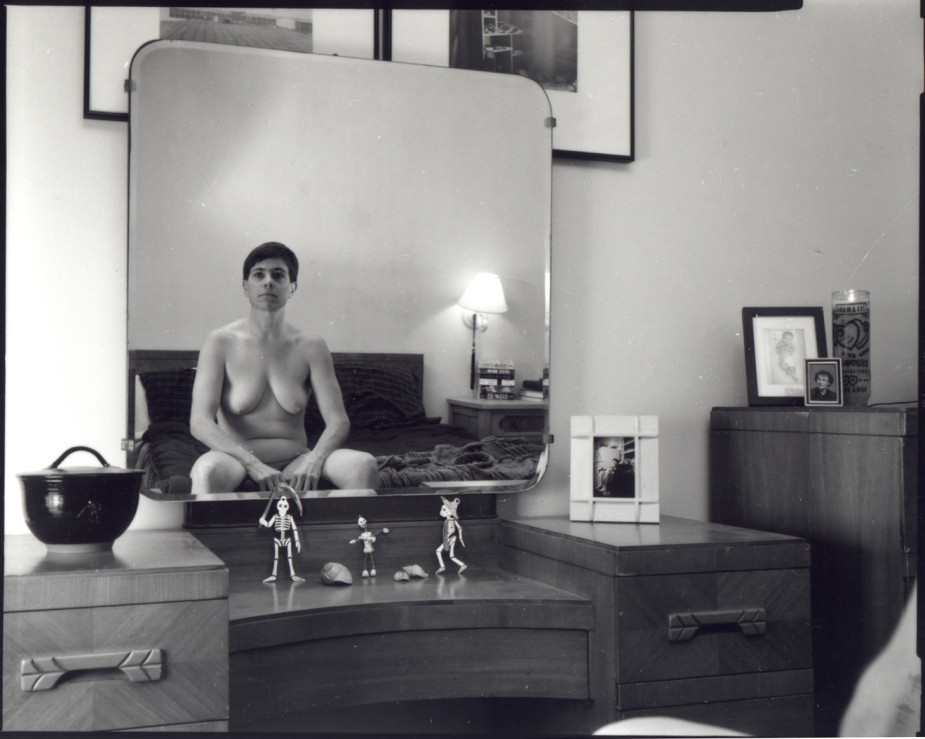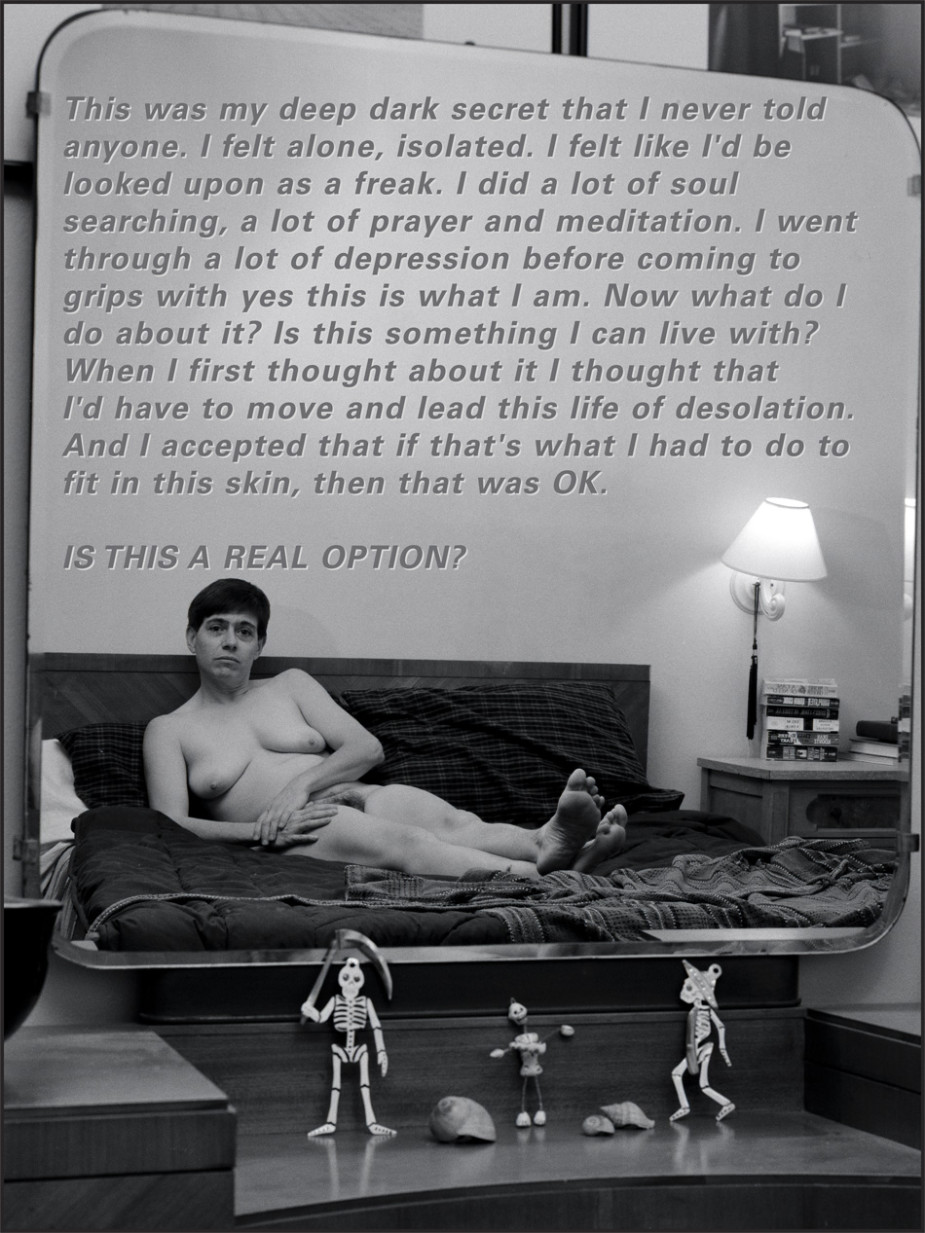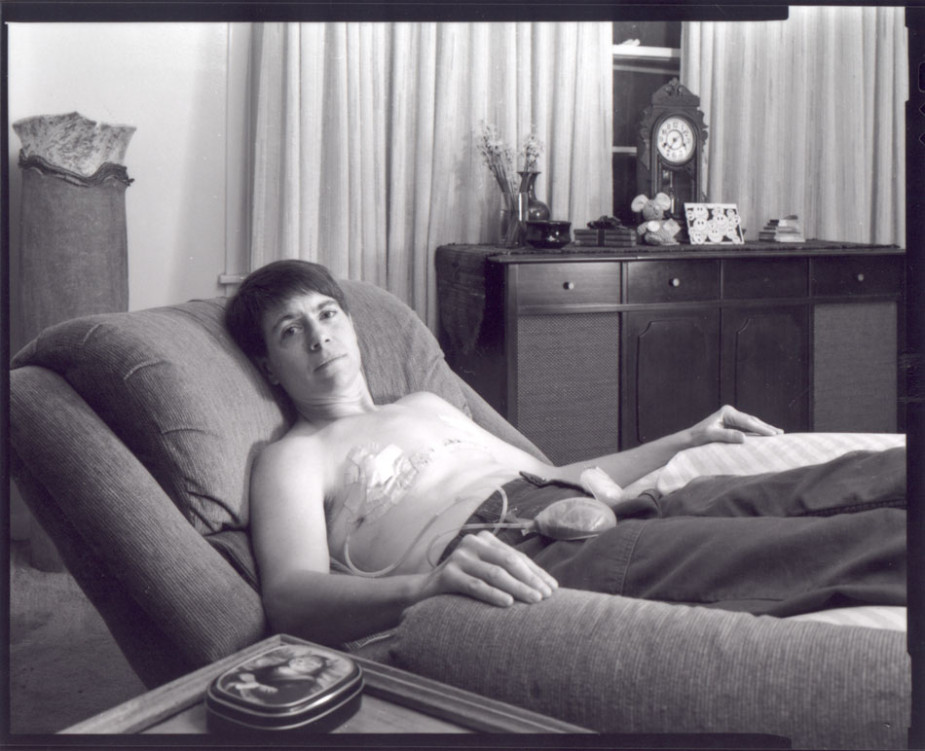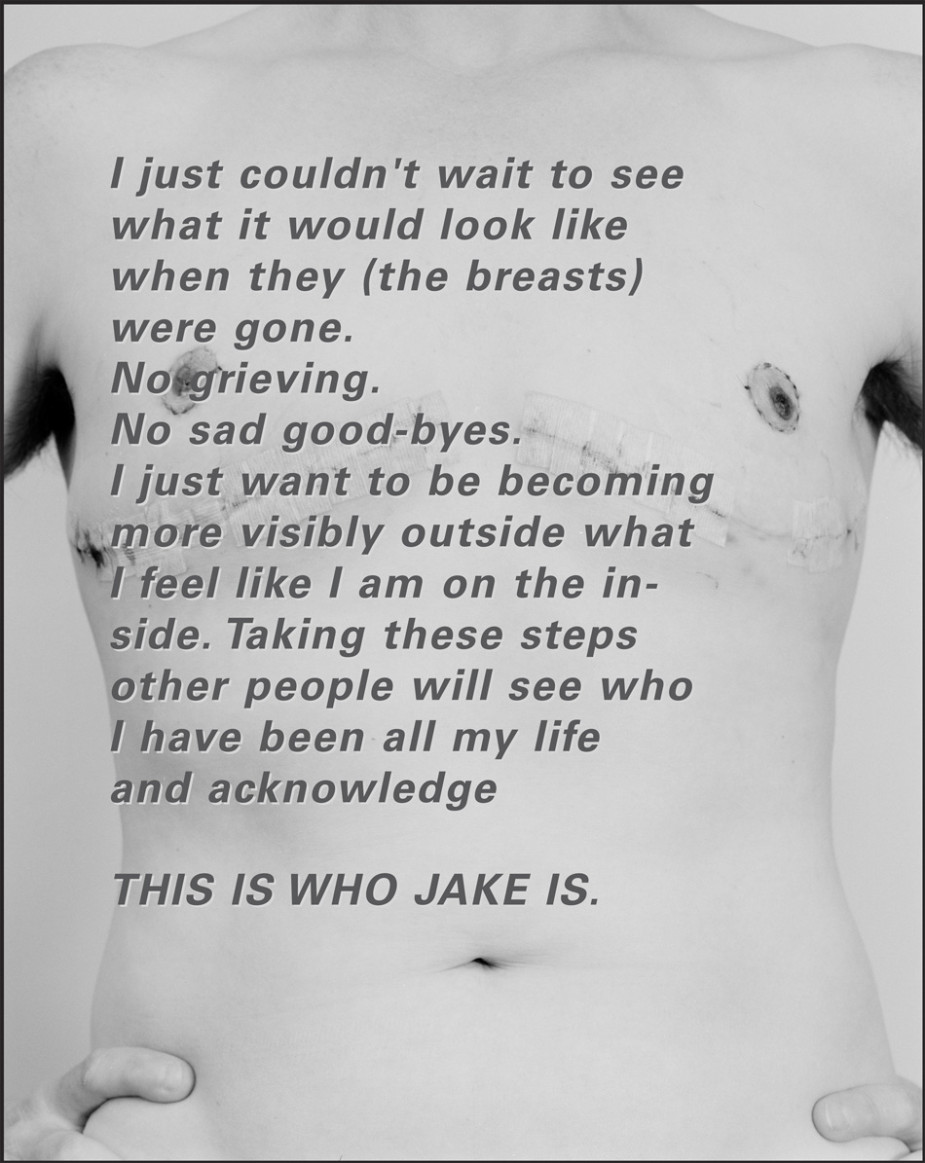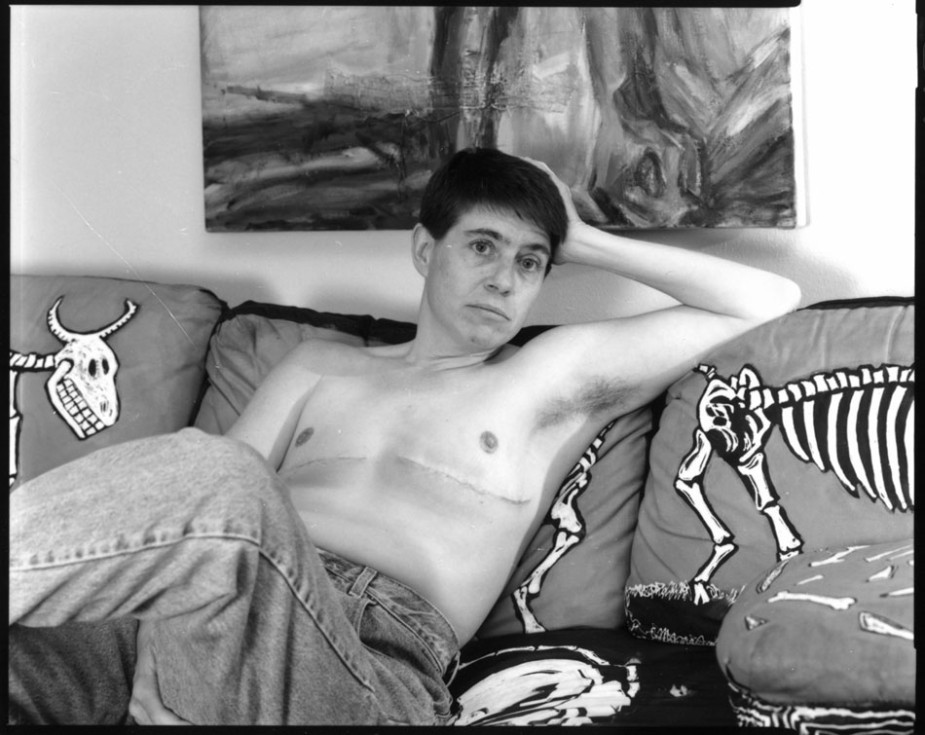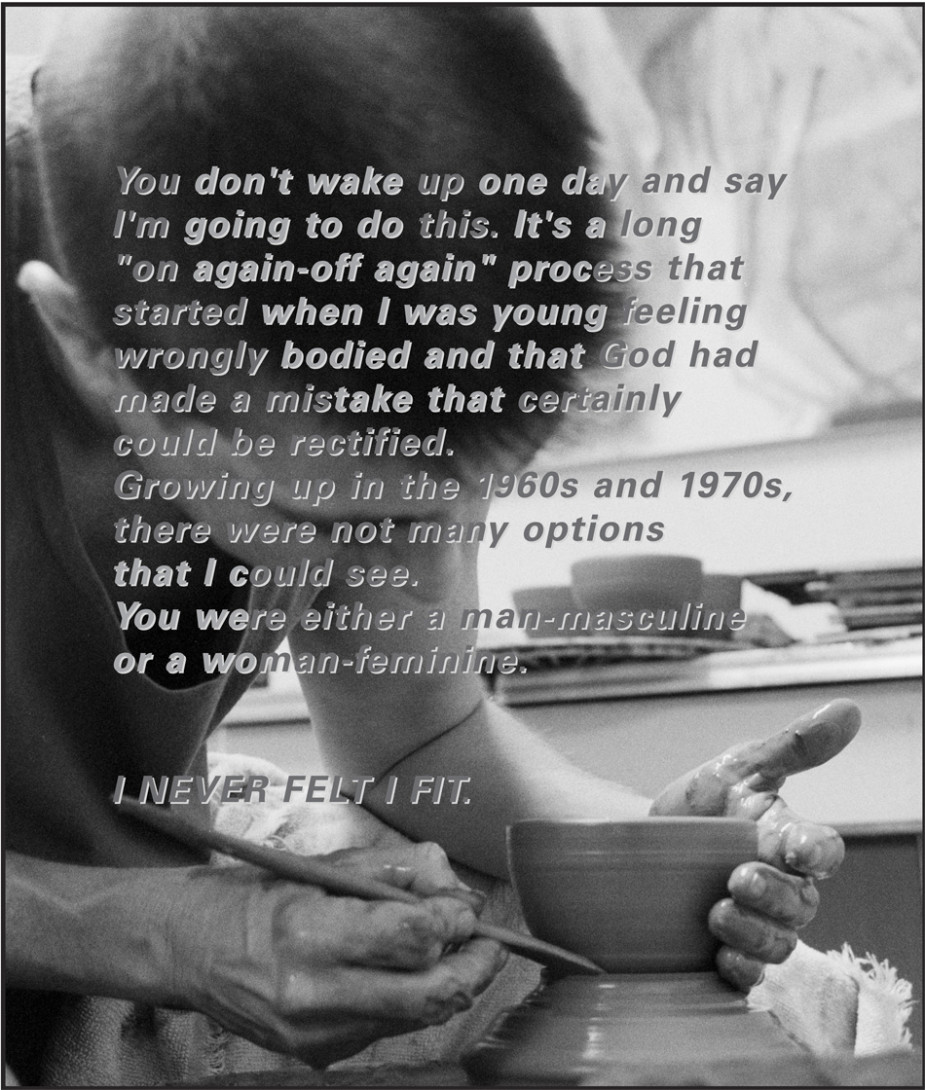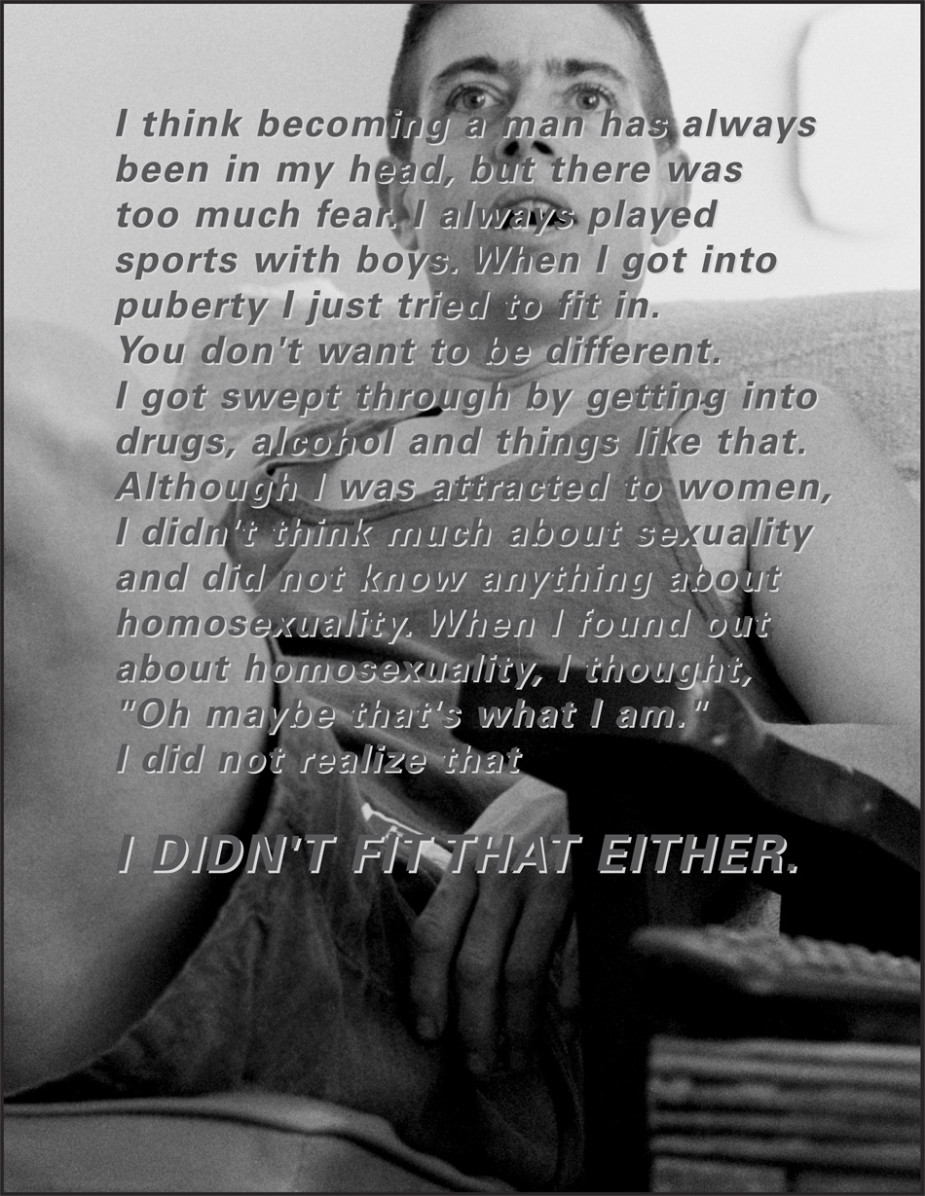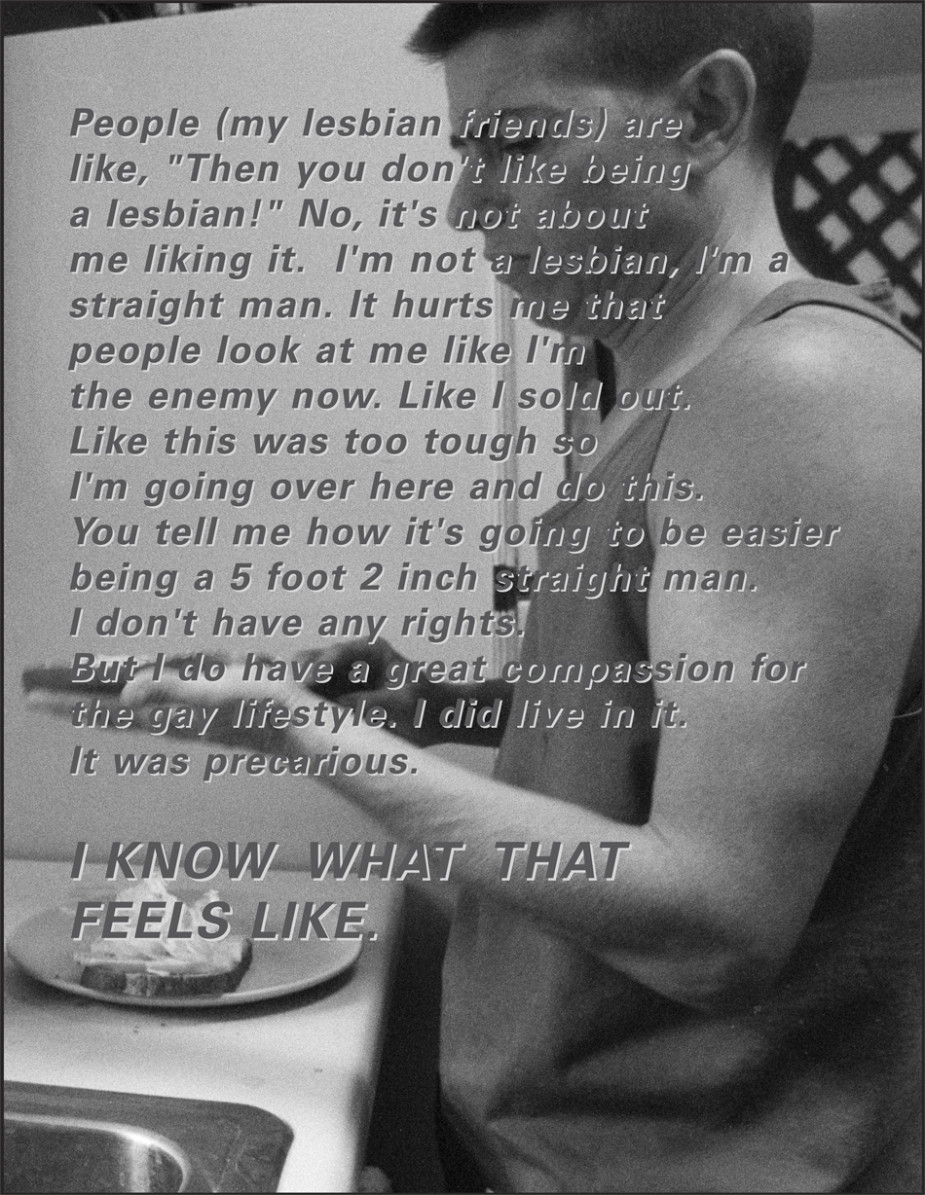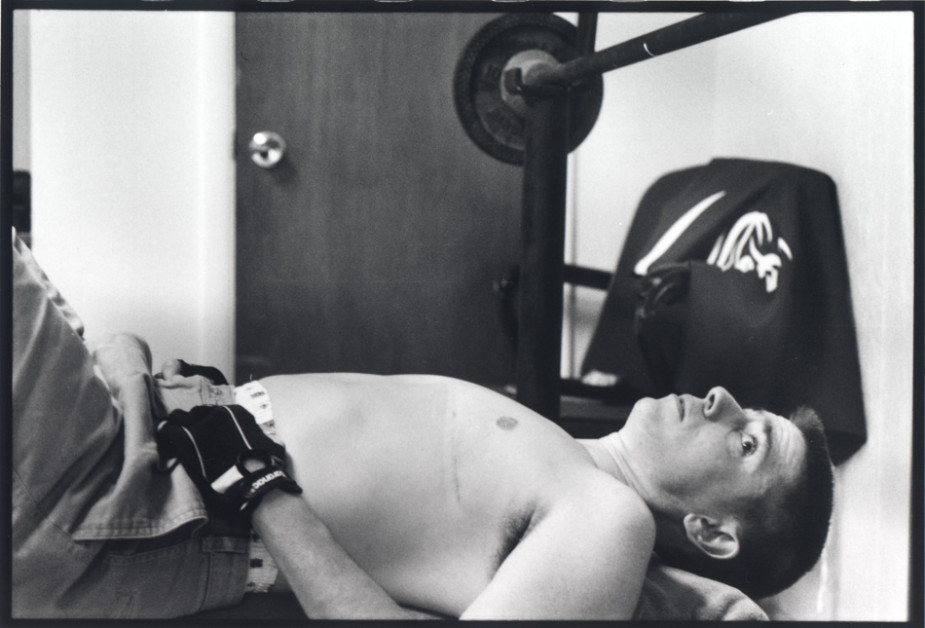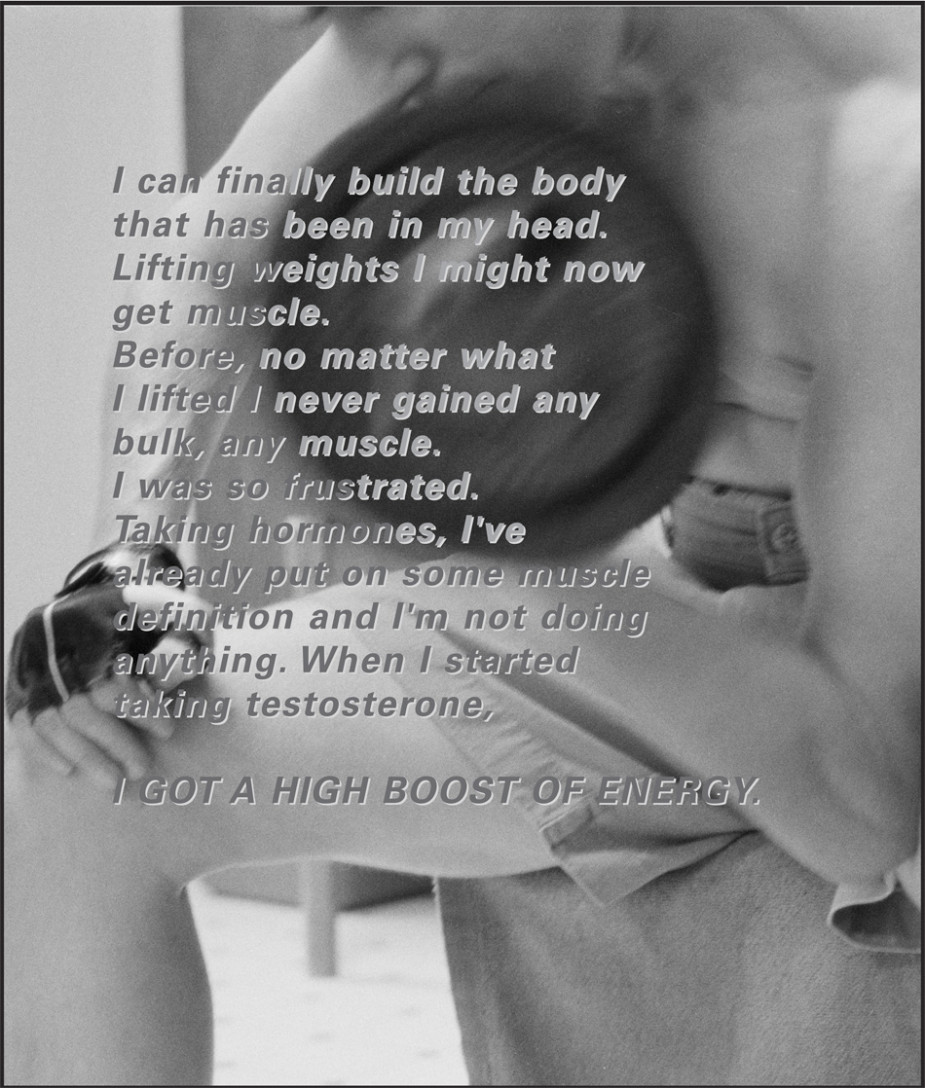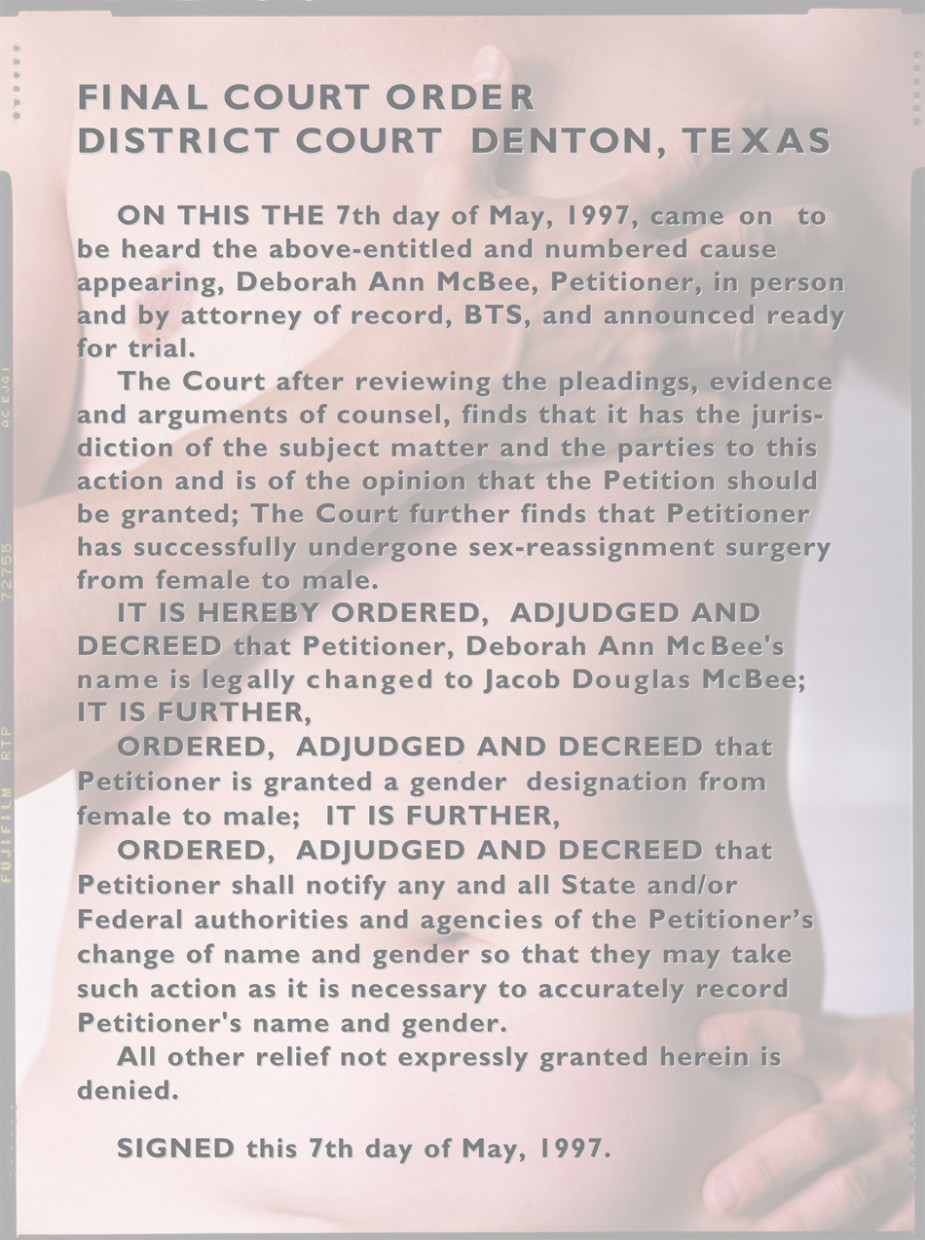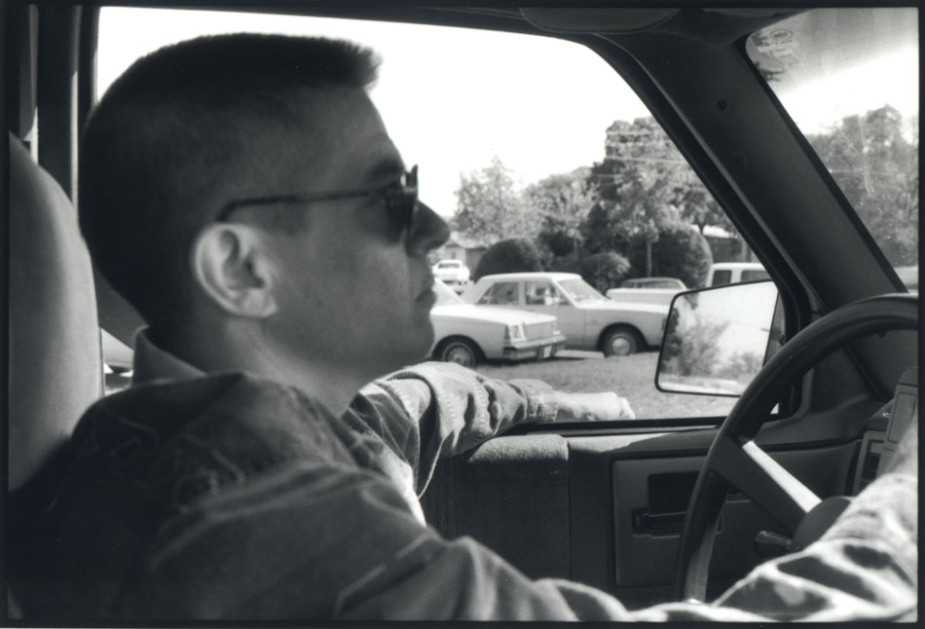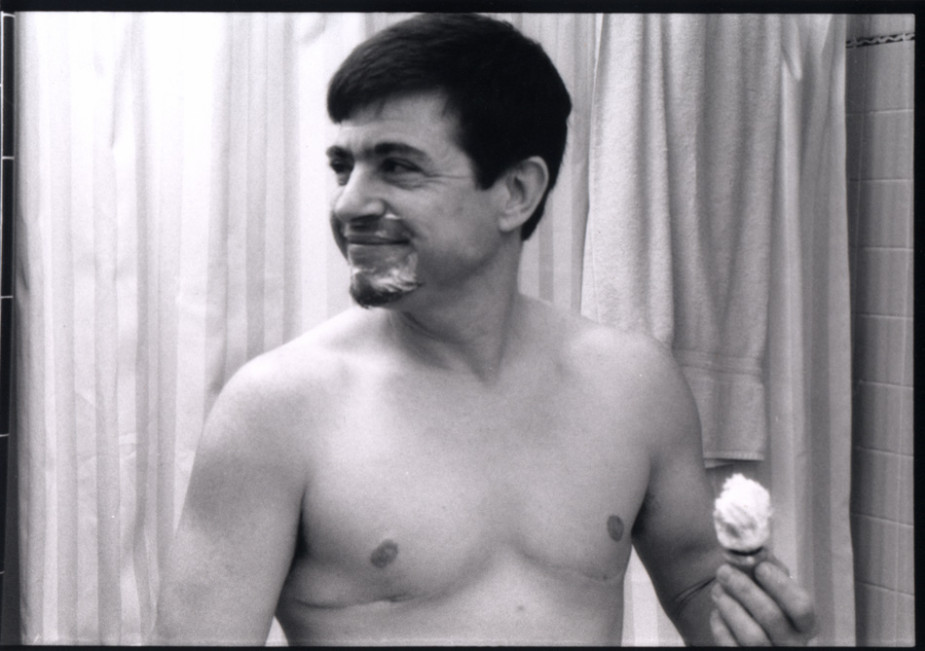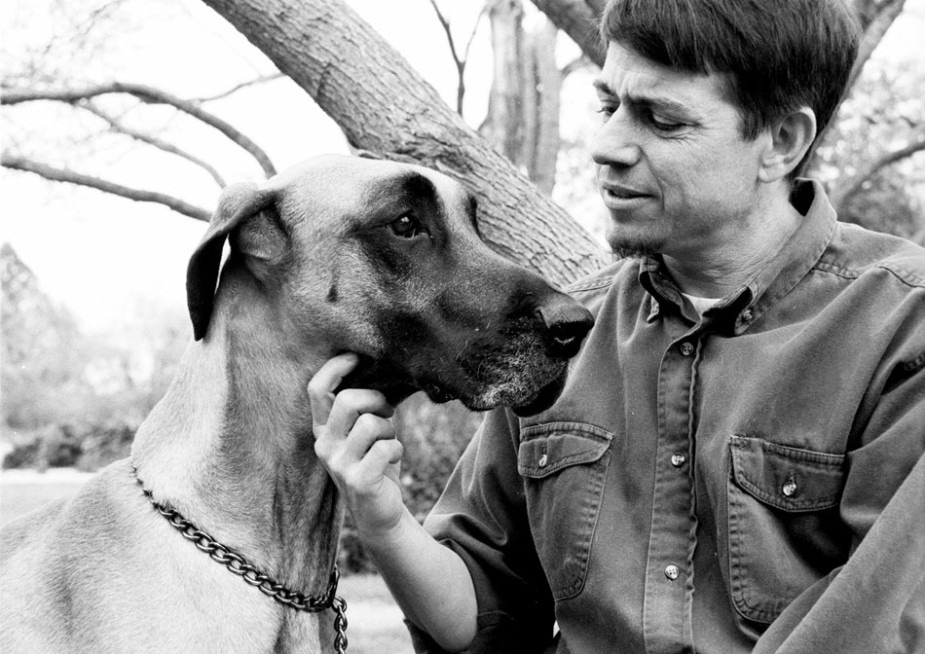 When Jake asked me to photograph his transition from female to male, I did not think that it would be difficult to photograph a physical form as it changed, but I felt it was not my issue. I did not understand what the disability was in being a man in a woman’s body. And as a black woman, I was aware that I occupied the position of “outsider” to the experiences of Jake who wanted to become a heterosexual white man. His act had its own value and meaning, but I was also wary of the ethical and political danger inherent in “speaking for others.”
When Jake asked me to photograph his transition from female to male, I did not think that it would be difficult to photograph a physical form as it changed, but I felt it was not my issue. I did not understand what the disability was in being a man in a woman’s body. And as a black woman, I was aware that I occupied the position of “outsider” to the experiences of Jake who wanted to become a heterosexual white man. His act had its own value and meaning, but I was also wary of the ethical and political danger inherent in “speaking for others.”
At that time, there was very little information about females-to-males. Jake felt he was pretty much in the dark about what would happen to him as he went through this process. He wanted to share the information about his experiences. Jake, himself, was also a photographer and wanted the photographs to be of use to others who came after him.
I never saw myself as an objective chronicler of life. My images were highly subjective and personal. But, as Jake continued to talk with me about the need for documentation, I eventually realized that photographing his transition was an opportunity to see how someone might construct masculinity, an area that I had been exploring with images of my father.
The intensity of Jake’s process changed the way I saw and photographed him over a four-year period. Bodily changes were not always visually apparent and his fluctuating behavior shifted my perceptions of him. His always wanting to put on a “good face” made conveying the complexity of his experience difficult.
The project placed us both in unfamiliar territory. I began to do videotape interviews with Jake as well as some of the people who knew him. Jake viewed his transition process as “his” experience while at the same time wanting everyone – his family, friends, colleagues and co-workers to make their transitions in step with his changing personae.
The photographs of Jake provide evidence of how the surgeries and hormone treatments changed his body over time. The text transcribed from the video interviews help to paint an emotional picture of the insecurities, hopes and fears, the anger, the desires and longings, voiced by Jake and the people who knew him. Combining the text and photographs helps give complexity and context to his experience. As friends, family and colleagues attempted to understand what Jake’s gender transition might mean for them, those of us who chose to keep him in our lives changed in ways and directions that are difficult to measure or articulate.
Fall 1996-1999
.
